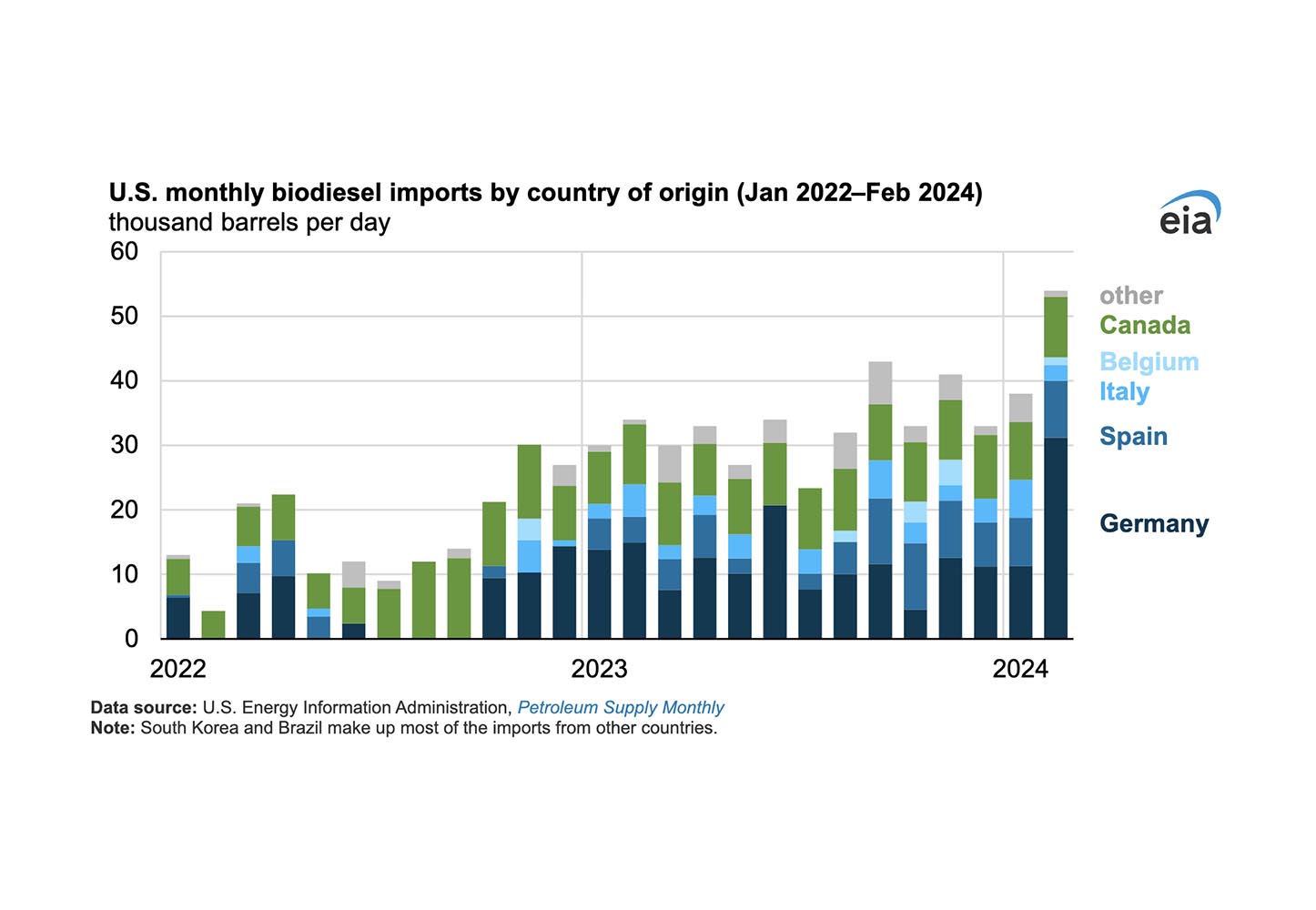
U.S. biodiesel imports double since 2022 amid low European prices
U.S. biodiesel imports have experienced a significant surge, doubling since 2022 due to the attractive low prices in Europe. According to the U.S. Energy Information Administration (EIA), the annual imports rose to an average of 33,000 barrels per day (b/d) in 2023, continuing the upward trend into the first months of 2024. Notably, the U.S. imported 54,000 b/d in February 2024, marking the highest monthly import since June 2017.
Prior to this surge, U.S. biodiesel imports averaged 12,000 b/d from September 2017 to October 2022. The U.S. Renewable Fuel Standard program, enacted in 2005, has been a key driver of biodiesel demand. Initially, the required blending volumes were low, resulting in minimal imports. However, as the program matured and biofuel blending requirements increased, the consumption, production, and imports of biodiesel rose.
Between 2013 and 2017, imports peaked at 27,000 b/d due to subsidised biodiesel from Argentina and Indonesia. The U.S. Department of Commerce and International Trade Commission responded with antidumping and countervailing duty orders, significantly reducing imports from these countries, which had accounted for nearly three-quarters of U.S. biodiesel imports during that period.
Recent surge in imports
The recent spike in U.S. biodiesel imports began in November 2022, driven primarily by the economic attractiveness of low European biodiesel prices. This price drop in Europe stems from policies under the EU’s Renewable Energy Directive (RED II), which set a cap on biofuels in transportation and allowed advanced biofuels to count twice toward blending targets.
Several factors have contributed to the lower biodiesel prices in Europe:
- Increased imports from China: Biodiesel imports into Europe from China increased significantly, by about 60% from 2021 to 2022 and nearly 20% in 2023. This biodiesel, produced from used cooking oil, qualifies for double counting toward EU blending targets.
- Increased renewable diesel consumption: The interchangeable use of renewable diesel, fully blendable with petroleum diesel, has grown. This growth has been stimulated by production increases, bringing many EU countries close to the 7% biofuels cap.
- Biofuel target reductions: High inflation has led some EU member states to cut biofuel targets, most notably Sweden, which reduced its required biofuel share in diesel fuel from 30.5% to 6.0% for 2024–26.
Impact on U.S. production and consumption
Despite increased competition from renewable diesel, U.S. biodiesel production rose by 5% in 2023. The combination of rising imports and domestic production resulted in the highest biodiesel consumption in the U.S. since 2017. However, the EIA forecasts a decrease in U.S. biodiesel production in 2024, anticipating lower blending margins due to reduced Renewable Identification Numbers (RIN) prices.
The primary source of the increased U.S. biodiesel imports has been Germany, which more than doubled its exports to the U.S. from 2022 to 2023. Other significant sources include Spain, Italy, and Belgium, with additional contributions from South Korea and Brazil. Archer-Daniels-Midland (ADM), a key player in biodiesel imports, has been instrumental, particularly with its operations in Germany.
Future outlook
The EIA predicts that net U.S. biodiesel imports will remain steady in 2024 compared to 2023, bolstered by high early-year imports and reduced demand in Europe. However, the growing production of renewable diesel in the U.S. is expected to balance the biofuel supply dynamics.
The doubling of U.S. biodiesel imports since 2022 highlights the complex interplay of global biodiesel markets, driven by regulatory changes, price differentials, and strategic trade movements. As the U.S. navigates these dynamics, the future of biodiesel production and consumption will be closely watched by industry stakeholders.














